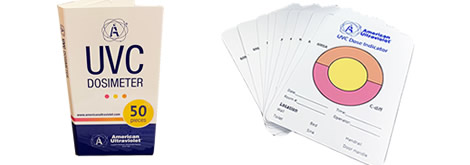
CDC Provides Guidelines for School Re-openings, Including UVC (UVGI)
Ventilation in schools and childcare programs, and how to use CDC building recommendations in school settings, has been a difficult to understand topic for many school administrators.
 School Administrators and facility staff in 2020 became overwhelmed with the number of glossy brochures of products touting made up claims about keeping student safe from COVID-19. It was very difficult for anyone to sort as quickly as new products rapidly entered the market – most completely untested for COVID-19, which requires a higher security testing facility (BSL 3 laboratory) due to its infectious nature.
School Administrators and facility staff in 2020 became overwhelmed with the number of glossy brochures of products touting made up claims about keeping student safe from COVID-19. It was very difficult for anyone to sort as quickly as new products rapidly entered the market – most completely untested for COVID-19, which requires a higher security testing facility (BSL 3 laboratory) due to its infectious nature.
Many schools were desperate to find the proper solutions, even though government funding provided sufficient funds to purchase products that they believed would help reduce or eliminate COVID-19 in their facilities, so that they could keep students and staff safe, and re-open quickly.
Sadly, there are now numerous reports and lawsuits that address the issues caused by products that do not work, and that, in many cases, may actually introduce hazards into the classroom environment. Keeping it simple, with tried-and-true filtration methods, some as simple as opening windows to increase ventilation in schools, have led the CDC to update the following guidelines for schools:
Bring in as much outdoor air as possible. If safe to do so, open windows and doors. Even just cracking open a window or door helps increase airflow, which helps reduce the potential concentration of virus particles in the air. If it gets too hot or cold, adjust the thermostat.
Do not open windows or doors if doing so poses a safety or health risk (such as falling, exposure to extreme temperatures, or triggering asthma symptoms).
Use child-safe fans to increase the effectiveness of open windows. Safely secure fans in a window to blow potentially contaminated air out, and to pull new air in through other open windows and doors. Consider having activities, classes, or lunches outdoors, when circumstances allow.
Ensure Heating, Ventilation, and Air Conditioning (HVAC) settings are maximizing ventilation. Make sure your ventilation systems are serviced and meeting code requirements. They should provide acceptable indoor air quality, as defined by ASHRAE Standard 62.1, for the current occupancy level for each space. Home-based childcare programs should meet requirements established by their state and local regulatory authorities. Set HVAC systems to bring in as much outdoor air as your system will safely allow. Reduce or eliminate HVAC air recirculation, when practical, and with expert HVAC consultation.
Increase the HVAC system's total airflow supply to occupied spaces when you can. More airflow encourages air mixing, and ensures any recirculated air passes through the filter more frequently. Disable demand-controlled ventilation (DCV) controls that reduce air supply based on occupancy or temperature. This way the air supply will remain constant throughout the day. For simple HVAC systems controlled by a thermostat, setting the fan control switch from "Auto" to "On" will ensure the HVAC system provides continuous air filtration and distribution.
Consider running the HVAC system at maximum outside airflow for 2 hours before and after the building is occupied in order to refresh air before arrival, and to remove remaining particles at the end of the day. Filter and/or clean the air in your school or childcare program. Improve the level of air filtration as much as possible without significantly reducing airflow. Make sure the filters are sized, installed, and replaced according to manufacturer's instructions.
Consider portable air cleaners that use high-efficiency particulate air (HEPA) filters to enhance air cleaning wherever possible, especially in higher-risk areas such as a nurse's office or sick/isolation rooms.
Consider using ultraviolet germicidal irradiation (UVGI) in schools and non-home-based childcare programs as a supplemental treatment to inactivate the virus that causes COVID-19, especially if options for increasing ventilation and filtration are limited. Consult a qualified professional to help design and install any UVGI system.
For more information on these recommendations, please visit:
https://www.cdc.gov/coronavirus/2019-ncov/community/schools-childcare/ventilation.html
Visit the Disinfection Update E-newsletter archives (which begin with March 2020) to read helpful stories about the effectiveness of UVC Disinfection.
None of the American Ultraviolet UVC products detailed above are certified, or approved under any applicable laws, as a medical device, and as such, American Ultraviolet, and its Representatives and Distributors, do not currently intend for them to be used as medical devices anywhere globally. Products have not been evaluated by the FDA.
